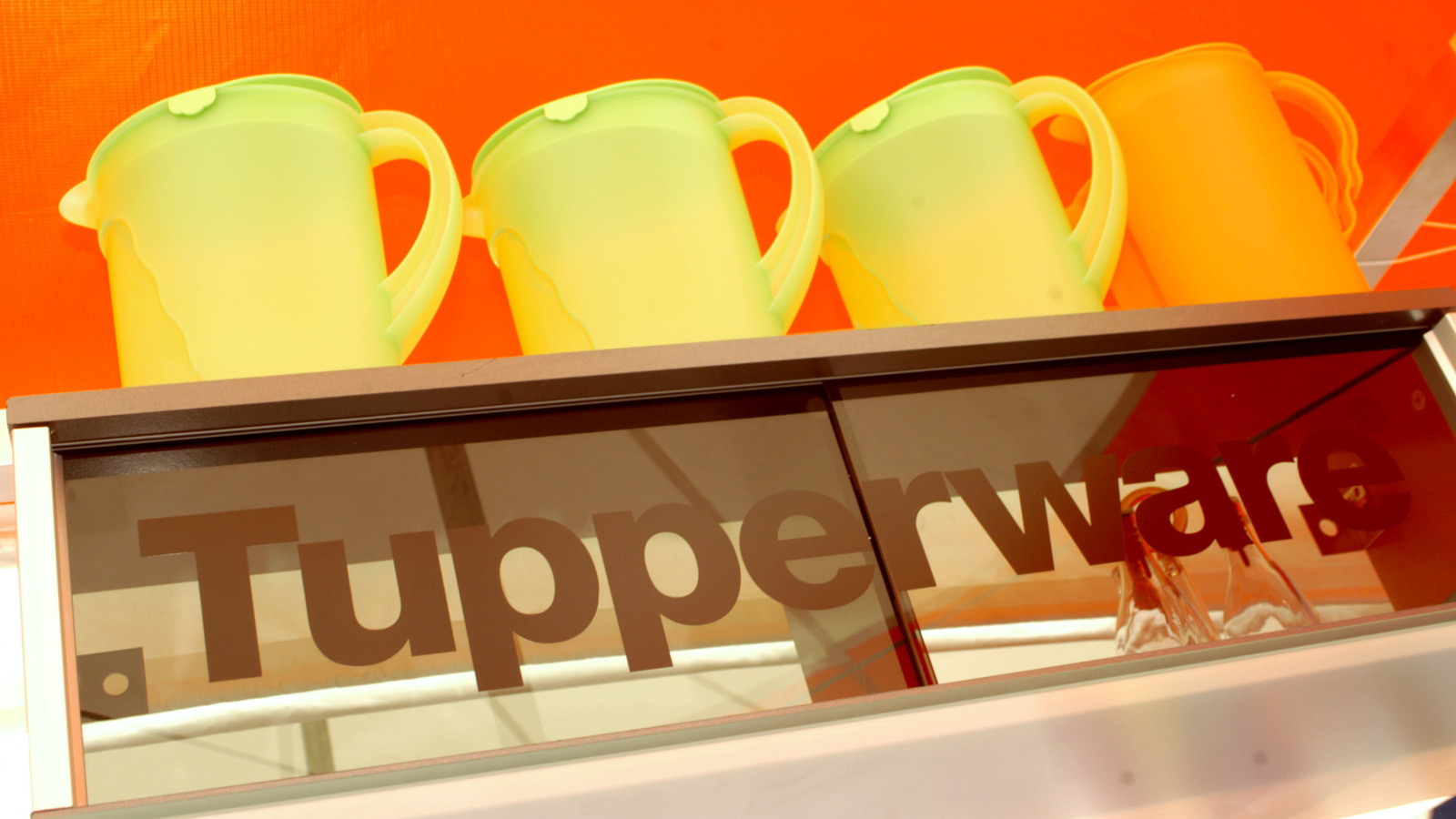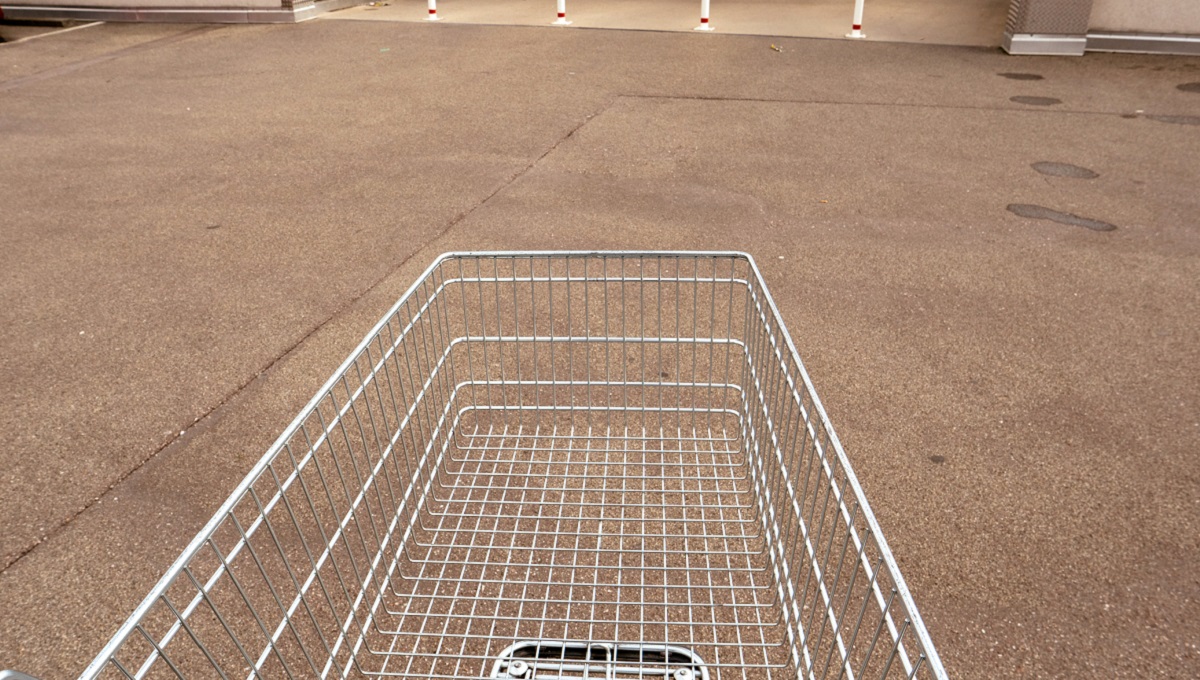
World War II has left a surprising legacy on our eating habits, and we still eat many foods that were invented during wartime , but nothing has had such a lasting social impact as the plastic food storage containers that were invented from war leftovers. Tupperware, as a product and a social phenomenon, got its start and found its success in the shifting cultural trends and social expectations of postwar America, and could not have thrived without the postwar economic boom and a nationwide return to domesticity. Innovative for their new approach to food preservation, Tupperware containers were a product intended for the kitchen, and the women who were sent back home to preside over this domain.
The brand's midcentury golden era, however, arose because these same women challenged their newly redefined roles as homemakers to help sell this revolutionary product. Tupperware found an avid consumer base through a game-changing sales model, and its plastic containers were vessels for female autonomy as much as improved food preservation. But in a new century, with women returning to the workforce and new insights into how plastic kitchenware absorbs odors and leaches chemicals, the brand has lost its sales force in tandem with the shift of plastics becoming démodé.

Ahead of its time as it may once have been, Tupperware has not been able to rebrand in recent decades. Many conflicting social factors have contributed to its rise and fall. The invention of plastic led to new kitchenware Though inventors had been working toward alternatives for expensive natural materials for a long time, the first fully synthetic plastic was a 20th-century phenomenon.
Belgian inventor Leo Baekeland introduced it to the public in 1907. Giving his name to the creation, he called it bakelite, and it quickly became a revolutionary substance, able to be mass-produced and molded into any form. This early form of plastic was standard in the manufacture of many everyday items, from home appliances and electrical insulation to costume jewelry.
Bakelite's versatility easily replaced natural, limited, and more expensive materials like wood, ivory, and metal. Many goods made from this original plastic were more affordable and accessible to the masses, and bakelite went on to become popular in household kitchens, particularly as handles for cutlery and cookware. The possibilities for plastics expanded with innovations from the Second World War.
Polyethylene, a much more malleable type of plastic introduced in 1933, is now the most commonly used worldwide. At the time, it became an especially important substance in military applications, from aircraft windows to parachutes. The Allies produced about 8 million pounds of polyethylene, which also proved useful as insulation for radar equipment to detect German submarines, and after the war, it went on to find further civilian uses.
The most successful use for polyethylene was far removed from its original wartime purposes, however, as it would make a name for itself as a popular household product — Tupperware. Tupperware started as a chemistry experiment with WWII plastics Born with the inclination to invent, Earl S. Tupper never intended to be in the plastics industry, but the economic depression of the 1930s made work scarce.
After some time employed in a plastics factory, Tupper's entrepreneurial urge to create led him to set off on his own. Developing various plastic containers, he didn't get a big break until after WWII, when he acquired leftover polyethylene from war manufacturing, and intended to find a new purpose for it. Challenged with the unwieldy substance, Tupper, after many trials, transformed it into a new kind of moldable, unbreakable plastic which he called Poly-T.
He shaped this material into a prototype that became the "Wonder Bowl," a receptacle with a lid that functioned as an air-tight seal. Inspired by the sealing technology used for paint cans, Tupper's invention was an ideal vessel to store food and leftovers. While these Poly-T food storage containers were more of a gimmick that Tupper originally gave away as freebies while selling other things, they were also a solution to a problem that no one else had solved — how to better preserve food, both inside and out of the refrigerator.
Before Tupperware, officially founded in 1946, women had often used shower caps to cover delicate glass or ceramic bowls, but the "burping" seal of Tupperware's design, patented in 1949, made for a much more effective food storage that kept things fresher for longer. A postwar boom welcomed new household technologies During WWII, women on the American home front participated in an unprecedented opportunity to join the workforce, filling in for jobs, both industrial and bureaucratic, that men had left to partake in the war effort. But once the war was over, regulations and social expectations strongly encouraged women to resume the prewar status quo so that returning soldiers could get their jobs back, pressuring women back into the domestic sphere.
Since men earned more than ever in the postwar economic boom, there wasn't really a need for two incomes in a household anyway, and those women who might have liked to pursue a career faced criticism for their ambition. Also during this time, was the great middle-class migration to the suburbs, a phenomenon which occurred after the war as young couples and families sought to own their own homes in neighborhoods ideal for raising families. With the kitchen becoming the housewife's designated domain, a slew of newfangled kitchen gadgets became a part of the homemaker's toolkit for efficient meal preparation, from improved toasters and electric mixers to state-of-the-art refrigerators and dishwashers.
With these increasingly elaborate kitchen appliances came a need to preserve all the food that was being whipped up, which created a prime setting for Tupperware to take center stage and fill a gap in the market. The brand would go on to thrive precisely because of the postwar culture of women returning to the home. Tupperware originally confused consumers Even in an era replete with innovative new technologies, the simplicity of Tupperware made it unlike anything consumers had ever seen before.
The smooth plastic surface, enticing spectrum of opaque colors, and unbreakability of the Poly-T bowls were an appealing use of a new civilian plastic technology, but the double-sealed lids were so different from anything else on the market that customers didn't understand how they worked. Tupperware's double seal, the innovation that made the brand's products so unique and revolutionary, turned out to be the reason it kept getting returned to stores. The bowls' water and airtight lids worked perfectly, but without knowing how to seal them properly, consumers thought the lids didn't fit and brought their Tupperware back.
When left sitting on store shelves without proper advertising behind them, it became clear that the products didn't sell themselves. But they did sell in other ways. Their sealing technology simply required a demonstration, and in a stroke of good timing, a new model of demo-based sales had popped up around the same time, which involved showing customers how products functioned in their own homes.
Home parties provided the ideal market for product demonstrations The new demo-based way of selling products paved the way for Tupperware's success, which piggy-backed off a marketing scheme that other salesmen had been experimenting with in the 1940s. The company Stanley Home provided a preferable alternative to door-to-door salesmanship by selling directly within homes. These "parties," typically hosted in living rooms, targeted the housewives who would be using the products for sale.
The concept involved one hostess inviting a product dealer and a circle of friends to a hands-on demonstration in her own home. This created a welcoming atmosphere and allowed salespeople to show off their products to consumers, which often resulted in a more likely chance of purchase. One of Stanley Home's saleswomen, Brownie Wise, saw the potential for selling more than just cleaning products directly to women in their homes when she discovered Tupperware bowls and their durability.
Wise pivoted to start up her own home party business, where she demonstrated the effectiveness of the Tupperware double seal to hostesses' circles of friends. Wise had success because the product was innovative, but also because she had an inventive approach to selling. She gave each party hostess Tupperware products as a thank you for opening up her home and introducing the product to her social circle, then began expanding business by recruiting some of these women to become saleswomen themselves, exponentially increasing the social circles they could sell to.
Wise's sales reflected how well this business approach worked. A saleswoman became the face of the brand Wise's demonstration-based sales continued to be lucrative — once women saw what Tupperware could do, there was no question of them wanting to buy it. These Tupperware parties also racked up the profits, because Wise's presentations were energetic and entertaining, including wearing funny hats and tossing a Tupperware bowl of grape juice across a room as proof of the lid's double-seal strength and bowl's unbreakability.
Catching wind of Wise's success selling these products independently, Earl Tupper himself decided she could do even more with an executive position, and hired her as general manager of a new home parties division of the company in 1951. The pair shared faith in Tupperware's state-of-the-art technology, but Wise convinced Tupper that home parties were so profitable because customers were much less likely to buy these plastic containers without understanding how they worked. Tupper agreed with her insight and her sales figures, and opted to pull Tupperware from store shelves completely.
The brand pivoted to selling exclusively through home parties. Tupperware products remained desirable as more people caught on to their sealing powers, but the inability to find them in stores gave these products the added appeal of exclusivity. Wise's new business model meant that buyers could only get their hands on Tupperware if they knew someone who was selling it.
This resulted in more people signing up to buy, and to sell. Tupperware culture was compared to a religion Wise's Tupperware parties made the products a household name, and provided unprecedented recruitment opportunities for women in postwar America. In a time when women were not only not expected to work, but looked down upon for doing so, hosting Tupperware parties offered a means of bridging two worlds — earning an income while remaining outside of the traditional workforce.
As Tupperware parties spread across the country, the products were bought and sold by women of all social backgrounds, who formed a national network of independently contracted homemakers. The system was simultaneously competitive and supportive, and Wise promoted Tupperware parties as a way of life. She encouraged positivity and gave recognition to an army of women by acknowledging their efforts and successes at sales meetings and in a regularly published newsletter.
Tupperware encouraged and enticed its saleswomen with rewards as well, celebrating top sellers with luxurious prizes, such as diamond jewelry, fashionable wardrobes, and even cars. Wise's evangelizing conversion and support methods made some people liken the midcentury Tupperware phenomenon to a religion, but in many ways, the business's success was in its feminine appeal. A woman-led brand that directly sold to and recruited other women, Tupperware's sales model capitalized on challenging the era's social expectations for women.
Under Wise's direction, sales jumped to $2 million in 1952, and in 1954, she became the first woman to appear on the cover of Business Week, along with her catchphrase, "If we build the people, they'll build the business." Wise's success worked against her Though Wise's leadership brought the brand to great heights — Tupperware's sales jumped to $25 million in 1954 — her business relationship with Tupper grew increasingly rocky during their years of collaboration. Tupper's interest in Wise's network of saleswomen was more for profit than for the empowerment of women workers.
It was not easy for him to accept that a woman had become the face of his company either, nor that her success had begun to outshine Tupperware products themselves. Whether or not resentment fueled his decision, Tupper fired Wise in 1958 under the guise of making Tupperware more sellable without a female executive amongst its ranks. He sold the company that same year to Rexall, a drugstore chain.
Because Wise had never had a formal contract with Tupperware, she received little compensation for her contribution to the business's success, and no stock in the company. To her credit as much as her detriment, her development of the home party business model had already established Tupperware's sales network. With this foundation in place, the company could continue to grow and make profits without her.
Once more on her own, Wise tried out a handful of different home party businesses, but none of them were ever as successful as her Tupperware empire. Meanwhile, under the new ownership of Rexall, Tupperware expanded into the international market, with home parties overseas remaining a primary means of selling its products. In 1996, it became a publicly traded company.
Copycats and equal pay upended Tupperware's business model Tupperware began its long, downward spiral in the 1980s, when Earl Tupper died. Though he had long since sold the company and the brand had expanded into creating all manner of plastic kitchen implements, Tupper's death coincided with the expiration of many patents for the original sealing technology of his plastic lids, inviting other copycat brands to develop and market similar concepts. With a myriad of competing plastic container brands, many of which were offered at more competitive prices, it became apparent that Tupperware as a household name didn't mean so much to the consumer when there were more affordable options that served exactly the same purpose.
During the same decade, Tupperware's salesforce also graduated to other aspirations. The 1980s, following legislation for equal pay and post-maternity employment, prompted women to return en masse to the workforce. With new jobs outside the home, their availability to sell Tupperware or even simply attend Tupperware parties diminished.
It became clear that the business model based on home parties was uniquely suited to the postwar domestic ideal of the mid-20th century. As women's roles evolved, the company that had relied on them compromising between work and home life was left behind. In an attempt to pivot, Tupperware returned to the store shelves it hadn't seen in decades through an agreement with Target.
The company also introduced catalogs in the hopes that direct consumer purchases might inspire more spending. Sales, however, continued to dwindle. Plastics fell in popularity In addition to Tupperware's business model becoming outdated, the very materials used to produce these recognizable containers have gradually become a cause for concern as well.
Consumer awareness for both human health and the environment has prompted a decline in the purchase of plastic products in recent years. Studies have shown that using plastic to store food can have detrimental health consequences, since chemicals in plastic can leach into food. This is especially hazardous if plastic is exposed to heat, such as in the microwave or dishwasher, as higher temperatures can cause it to start breaking down.
Keeping plastics in the freezer can also cause them to deteriorate, despite the assurance of the Tupperware symbols indicating alleged temperature resistance. Scientific studies have also revealed that the ubiquitous nature of plastic in our daily lives and cooking leads to inevitably ingesting microplastics. Between inhaling particles in the air and ingesting particles in our food and water, a study published in the journal Exposure & Health found that we consume about 5 grams of microplastics each week, which translates to about the amount that would make up a credit card, the notion of which has been enough to direct people towards alternatives to plastic.
These health concerns paired with the extreme pollution of plastic manufacturing have continuously converted many consumers over to storing food in different containers — glass has been deemed a safer option, and glass containers are better for fridge organization . The company declared bankruptcy in 2024 In addition to consumer trends and environmental awareness disavowing the once-revolutionary Tupperware materials, the parties that formerly served as the brand's own private advertising are no longer the exclusive shopping experience they once were. While it's true that Tupperware's materials and selling tactics were effective as a midcentury disruption of consumer and market trends, after firing Brownie Wise, the company has not evolved with the times as effectively as it once did.
In an age where e-commerce has become a dominant form of marketing, a strong online presence is now an important way for consumer goods companies to reach customers. Tupperware, which relied on in-person sales, did not update its selling methods fast enough, and its prices can't compete with online retailers like Amazon. Profits did rise temporarily in 2020, during the Covid pandemic, when more time to make meals from scratch at home and prepare baked goods in bulk inspired more interest in food storage products.
But this uptick in sales couldn't last. Warning of the threat of bankruptcy since 2023, Tupperware embarked on a series of shifts to try and avoid this fate, shutting down its South Carolina factory and laying off nearly 150 workers. Operations were moved to Mexico, but these efforts to cut costs simply couldn't hold up against accrued debts.
Tupperware officially filed for bankruptcy in September 2024, surprising many, but also reflecting the necessity to adapt to consumers' ever-changing needs..














